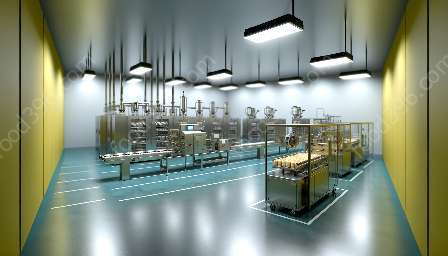Thermal processing methods play a crucial role in food preservation and processing, ensuring the safety and quality of food and drink products. In this comprehensive guide, we will explore various thermal processing techniques and their applications in the food industry, covering topics such as pasteurization, sterilization, and thermal preservation.
Pasteurization
Pasteurization is a common thermal processing method used to eliminate pathogenic microorganisms in food and drinks. This method involves heating the product to a specific temperature for a predetermined time, effectively reducing the microbial load without significantly affecting the sensory characteristics of the product. Pasteurization is widely employed in the dairy industry to extend the shelf-life of milk and other dairy products, ensuring product safety without compromising taste and nutrition.
Sterilization
Sterilization is a more intensive thermal processing method that aims to eradicate all viable forms of microorganisms, including bacterial spores. This technique is commonly used in the canning industry, where canned foods are subjected to high-temperature treatments to achieve commercial sterility. The thermal processing conditions are carefully calibrated to ensure the destruction of any potential pathogens while maintaining the product's organoleptic properties and nutritional value.
Thermal Preservation
Thermal preservation methods, such as canning and bottling, rely on heat to inactivate enzymes and microorganisms, ensuring long-term stability and safety of the products. Canning involves heating food in a sealed container to eliminate spoilage microorganisms and enzymes, effectively extending the shelf life of the product. Similarly, bottling involves thermal processing of beverages to maintain their quality and safety during storage and distribution.
Heat Treatment
Heat treatment encompasses a broad range of thermal processing methods, including blanching, boiling, and pasteurization, to reduce microbial load, inactivate enzymes, and extend the shelf life of perishable foods. This technique is commonly used in the processing of fruits, vegetables, and meat products to enhance their microbiological safety and overall quality.
Applications in Food and Drink
The application of thermal processing methods extends across various food and drink categories, including dairy products, canned foods, bottled beverages, and frozen foods. These techniques not only ensure the safety and shelf stability of products but also contribute to the development of a diverse range of convenient and nutritious food choices for consumers.
Conclusion
Thermal processing methods are indispensable in the realm of food preservation and processing, offering effective strategies to enhance food safety, extend shelf life, and maintain product quality. By understanding the principles and applications of thermal processing, food industry professionals can develop innovative products that meet the highest standards of safety and sensory appeal.


















